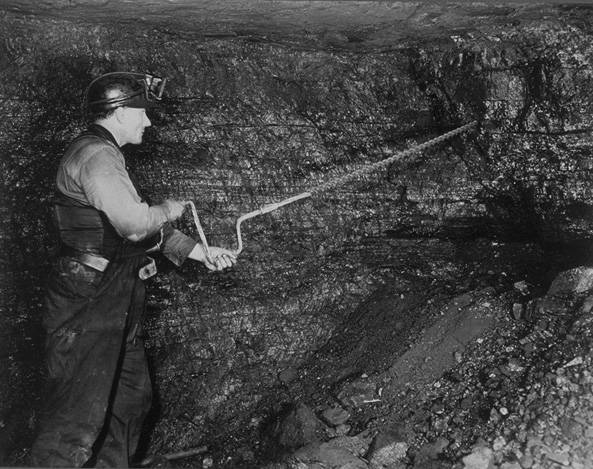In the late 19th century, Virginia and other southern states embraced the idea of a “New South.” This southern revival aimed to transform an antebellum, plantation-based, agricultural infrastructure into a diversified, industrialized economy. Northern capital fueled the developments of coal mines, railroads, and manufacturing centers throughout the South. Railroads were key to the expansion of business, agriculture, and industry, with more than 2,000 miles of new tracks laid between 1870 and 1900.
This photograph shows a coal miner in Tazewell County, Virginia. Despite the dangerous and difficult working conditions, Virginians flocked to the coal mines, and coal deposits in Tazewell County and other parts of southwestern Virginia fueled the development of railroads. Railroads connected the mountains and Ohio River Valley with the expanding ports of Newport News and Norfolk in eastern Virginia, where the shipbuilding industry boomed. Norfolk became a leading exporter of agricultural and industrial products including lumber, cotton, peanuts, and coal.
Source: Virginia New York World’s Fair Commission, “href="http://digitool1.lva.lib.va.us:1801/webclient/DeliveryManager?pid=26848&..." target="_blank">[A miner drilling a hole in the coal face for explosives],” still image, c. 1939, 1939 World’s Fair Photograph Collection, The Library of Virginia, accessed September 6, 2017.













